-
×
 TikTok Ads Mastery 2024 By Chase Chappell
1 × $23,00
TikTok Ads Mastery 2024 By Chase Chappell
1 × $23,00 -
×
 Free Cloud Sites By BSPE Legal Marketing
1 × $78,00
Free Cloud Sites By BSPE Legal Marketing
1 × $78,00 -
×
 White Phoenix’s The Smart (Money) Approach to Trading By Jayson Casper
1 × $39,00
White Phoenix’s The Smart (Money) Approach to Trading By Jayson Casper
1 × $39,00 -
×
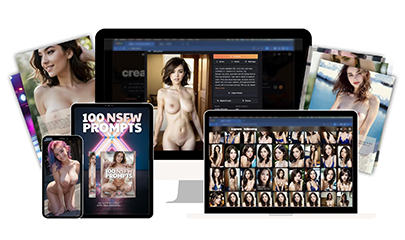 AI NSFW Mastery - Unlock the Secrets of AI Porn! By Only AI
1 × $23,00
AI NSFW Mastery - Unlock the Secrets of AI Porn! By Only AI
1 × $23,00 -
×
 AI Money Bots System By Stas Prokofiev
1 × $23,00
AI Money Bots System By Stas Prokofiev
1 × $23,00 -
×
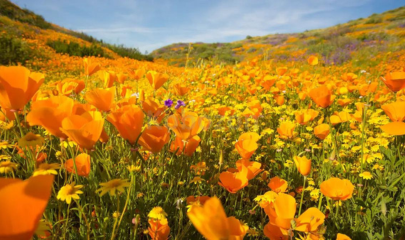 Selections in Photoshop By Colin Smith
1 × $5,00
Selections in Photoshop By Colin Smith
1 × $5,00 -
×
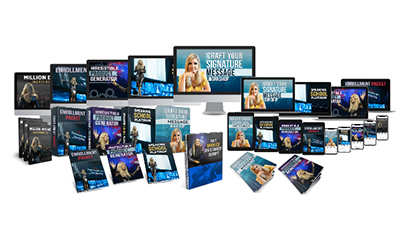 Million Dollar Masterclass By Eileen Wilder
1 × $85,00
Million Dollar Masterclass By Eileen Wilder
1 × $85,00 -
×
 Agency Partner Program By Jason Wardrop
1 × $15,00
Agency Partner Program By Jason Wardrop
1 × $15,00 -
×
 8D Lip Design eLearning Fillers Course By Tim Pearce
1 × $241,00
8D Lip Design eLearning Fillers Course By Tim Pearce
1 × $241,00 -
×
 Sacred Success Coaching Method By Eden Carpenter
1 × $139,00
Sacred Success Coaching Method By Eden Carpenter
1 × $139,00 -
×
 POFU Live 2021 (4th Edition) By Semantic Mastery Crew
1 × $39,00
POFU Live 2021 (4th Edition) By Semantic Mastery Crew
1 × $39,00 -
×
 Web API - JavaScript Fetch getting JSON data Fun with APIs
1 × $6,00
Web API - JavaScript Fetch getting JSON data Fun with APIs
1 × $6,00 -
×
 Adobe Photoshop CC Bootcamp By Blake Rudis
1 × $5,00
Adobe Photoshop CC Bootcamp By Blake Rudis
1 × $5,00 -
×
 RARM - Rapid Anxiety Reduction Method Therapy by Karen Phillip & Wayne Phillip
1 × $31,00
RARM - Rapid Anxiety Reduction Method Therapy by Karen Phillip & Wayne Phillip
1 × $31,00 -
×
 Mergers and Acquisitions Toolkit By Domont Consulting
1 × $23,00
Mergers and Acquisitions Toolkit By Domont Consulting
1 × $23,00 -
×
 Cognomovement An Energy Healing System With Bill McKenna and Liz Larson - The Shift Network
1 × $46,00
Cognomovement An Energy Healing System With Bill McKenna and Liz Larson - The Shift Network
1 × $46,00 -
×
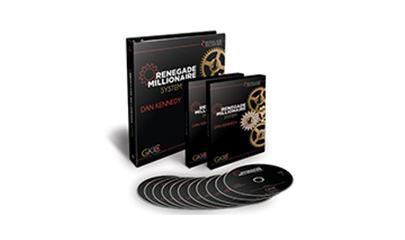 Renegade Millionaire System By Dan Kennedy
1 × $6,00
Renegade Millionaire System By Dan Kennedy
1 × $6,00 -
×
 Rocket Ship Buy - Short Signal By Gareth Soloway - InTheMoneyStocks
1 × $31,00
Rocket Ship Buy - Short Signal By Gareth Soloway - InTheMoneyStocks
1 × $31,00 -
×
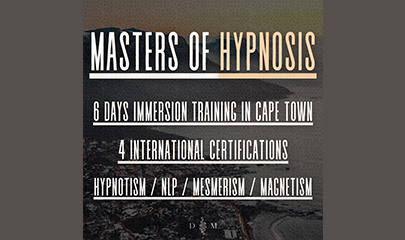 MASTERS OF HYPNOSIS Course 2023 By David Mears
1 × $233,00
MASTERS OF HYPNOSIS Course 2023 By David Mears
1 × $233,00 -
×
 Your First 10000 Followers By Katya Varbanova
1 × $23,00
Your First 10000 Followers By Katya Varbanova
1 × $23,00 -
×
 Speed Seduction Powerpack Gold Walkup By Ross Jeffries
1 × $23,00
Speed Seduction Powerpack Gold Walkup By Ross Jeffries
1 × $23,00 -
×
 Applying Design To Wireframes with HTML5 & CSS3 By Stone River eLearning
1 × $6,00
Applying Design To Wireframes with HTML5 & CSS3 By Stone River eLearning
1 × $6,00 -
×
 Online - The Demartini Values Training Program - USA 2020 (Videos Only) By Dr John Demartini
1 × $622,00
Online - The Demartini Values Training Program - USA 2020 (Videos Only) By Dr John Demartini
1 × $622,00 -
×
 Natural Instinct Method - RSD Nation
1 × $5,00
Natural Instinct Method - RSD Nation
1 × $5,00 -
×
 The Pleasure Diet By Amy Waterman And Your Brilliance
1 × $8,00
The Pleasure Diet By Amy Waterman And Your Brilliance
1 × $8,00 -
×
 Simple Backdrops for Compositing By Brooke Shaden
1 × $5,00
Simple Backdrops for Compositing By Brooke Shaden
1 × $5,00
How to Photograph Pets in the Studio By Carli Davidson
$14,00 $5,00
SKU: KOB.534824P229s
Category: Photography
Tags: Carli Davidson, How to Photograph Pets in the Studio, Studio
How to Photograph Pets in the Studio by Carli Davidson – Instant Download!
Let’s embark on a captivating adventure to uncover remarkable insights that spark your curiosity and elevate your understanding

How to Photograph Pets in the Studio By Carli Davidson
Overview
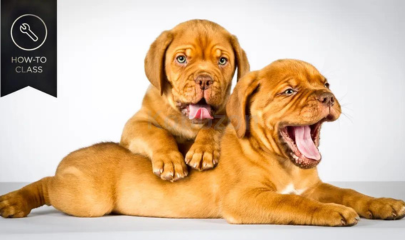
How to Photograph Pets in the Studio by Carli Davidson
Capturing the essence of pets through photography is an art that goes beyond mere technical skills. Carli Davidson’s insights on how to photograph pets in a studio environment blend technique with an understanding of animal behavior and emotion. Her approach emphasizes the need to create a comforting atmosphere that allows pets to express their true personalities. A well-executed pet photo can evoke joy, warmth, and sometimes even a chuckle, illustrating that these furry companions have stories to tell just like their human counterparts. This article delves into Davidson’s key recommendations for aspiring pet photographers, exploring how to foster an engaging and stress-free environment for your animal subjects.
Understanding Animal Behavior
Understanding pet behavior is an essential first step in capturing their unique essence through photography. Carli Davidson emphasizes that knowing how animals communicate can greatly enhance the photographer’s ability to create a relaxed setting. Dogs, for instance, display emotions through their tails, ears, and even facial expressions. By recognizing these signals, photographers can adjust their techniques to ensure a sense of ease for their subjects.
For those new to pet photography, volunteering at animal shelters is an excellent way to develop these crucial skills. Spending time with a variety of animals allows photographers to observe different behaviors what makes a dog excited versus what calms a timid cat. This firsthand experience becomes a valuable tool in the studio, providing insights that cannot be learned through textbooks alone. Knowledge gained in such environments can foster an innate understanding of how to facilitate a successful photoshoot.
Moreover, every animal has its individual quirks. Understanding these nuances, such as a dog’s affinity for a particular toy or a cat’s preferred hiding spot, can significantly enhance the overall experience of the photoshoot. The ability to interpret an animal’s body language transforms the session from a mere task into a collaborative endeavor where the animal feels safe and understood, resulting in genuinely captivating images.
Creating a Comfortable Environment
Creating a comfortable and secure environment for pets is paramount. Davidson’s approach suggests that space and freedom are crucial aspects of a successful shoot. For example, letting dogs roam off-leash gives them the freedom to explore, relax, and eventually settle into the environment. This initial period of exploration is pivotal in reducing anxiety and enabling pets to feel at home in the studio.
Cats, on the other hand, may require a different strategy. As creatures of habit, they may need time to acclimate to the unfamiliar setting. Establishing hiding spots, such as boxes or soft blankets, can create a sense of security. It allows cats to emerge at their own pace, ensuring they never feel pressured into the open. This gentle approach highlights Davidson’s philosophy: understanding that patience is as necessary in photography as any technical skill.
Another key recommendation is using familiar items that belong to the pets, such as their favorite blanket or toys. These personal touches can reinforce comfort and reduce the stress of a new environment. By incorporating these elements, photographers not only create an appealing backdrop but also personalize the experience, eventually leading to more authentic portraits. This attention to detail showcases the importance of a relaxed atmosphere as it not only enhances the quality of photographs but also contributes to a positive experience for both the photographer and the pets involved.
Time Management
Effective time management is an often-overlooked element in pet photography that Davidson ardently advocates for. Planning to spend 15 to 30 minutes for each session allows pets the necessary time to adjust to their surroundings. This duration is vital for encouraging natural behavior, as pets often need time to explore and familiarize themselves with the new environment.
Rushing through the photoshoot can lead to forced poses and, ultimately, unflattering images that fail to capture the true spirit of the animal. In contrast, taking the time to observe and engage with the pet allows for genuine interactions to blossom. Davidson emphasizes the importance of patience in photography; when animals sense the absence of urgency, they display their personalities more freely and authentically.
Moreover, planning ahead helps photographers avoid potential distractions during the session. An organized studio space with correct lighting, props, and equipment ready to go ensures that time is dedicated to capturing moments rather than fumbling with gear or adjusting settings. This level of preparation further supports the comfortable environment needed to create stunning images as it minimizes interruptions that might unsettle the pets.
Positivity and Engagement
A joyful photoshoot often hinges on the photographer’s ability to engage pets actively. Carli Davidson highlights playful interaction as a critical component of capturing a pet’s personality. By using toys, treats, or even fun sounds like squeaky toys to prompt reactions, photographers can elicit spontaneous moments that reflect true emotions.
Pets, much like children, respond well to stimuli that invoke joy. For instance, throwing a ball or using a favorite treat not only serves to capture attention but also shifts the focus from the intimidating camera setup to the enjoyable activity at hand. This playful dynamic can prompt moments of pure delight and spontaneity, resulting in expressive photographs that resonate with viewers on an emotional level.
Additionally, fostering a positive experience for pets during a photoshoot can profoundly impact the end results. If an animal perceives the session as fun, the images are likely to portray this joy, making the photographs not just aesthetically pleasing but also filled with character. This connection between photographer and pet is a crucial element that Davidson highlights, showcasing how integral it is to what differentiates an average photo from one that tells a compelling story.
Technical Aspects
While Carli Davidson emphasizes the emotional connection with pets, she also acknowledges the importance of technical skills in photography. Understanding camera settings, lighting, and equipment plays an essential role in capturing high-quality images. Davidson relies on her Nikon D4, a piece of gear known for its exceptional performance in studio settings. Selecting the right equipment can drastically alter the quality of pet photography.
Various factors contribute to the technical side of photographing pets, such as shutter speed, aperture, and ISO settings. For fast-moving pets, a higher shutter speed is necessary to freeze the action and avoid motion blur. In contrast, using a lower aperture can create a beautiful depth of field, accentuating the subject while providing a soft background that doesn’t distract from the animal. These settings become essential as photographers navigate the unpredictability of working with animals.
Lighting is another fundamental aspect of studio photography that requires careful consideration. Proper lighting sets the mood for the photos and can affect the mood of the animals. Soft, diffused lighting generally creates a warm and inviting atmosphere, while harsh lighting may provoke anxiety. Experimenting with different lighting techniques can produce various results, allowing photographers to select what best fits the desired outcome.
Fostering Trust
Building rapport with the animal during a photoshoot is integral to fostering an environment where pets feel safe to be their true selves. Davidson underscores the importance of avoiding forced poses and instead capturing the animal’s natural reactions. When pets feel safe, they exhibit genuine behavior, leading to authentic, heartfelt images.
Trust can be established through gentle interaction, allowing pets to approach the photographer on their terms. This involves giving animals time to investigate the setup, offering them treats, and engaging in playful gestures that encourage engagement. The more at ease they feel, the more likely they are to reveal their personalities during the shoot.
The key to successful pet photography is building an emotional connection rather than creating a rigid framework of poses. Davidson often highlights that the happiest pets yield the best results. Embracing this philosophy ensures that the artistry of photographing pets goes beyond the technical to focus on the essence of the creatures themselves.
Conclusion
Carli Davidson’s expert guidance illuminates the intricate dance between technical skills and emotional connection when photographing pets in a studio setting. Understanding animal behavior, creating a comfortable environment, managing time wisely, fostering positivity, and building trust with pet subjects are all essential components of capturing stunning images. Davidson’s approach not only enhances the quality of pet photography but also crafts an enjoyable experience for both the photographer and the animals involved. As you embark on your pet photography journey, remember that behind every photograph is a story waiting to be told, reflecting the unique bond shared between humans and their furry companions. Embrace the art and emotion of storytelling through photography, and your images will resonate for years to come.
Frequently Asked Questions:
Innovation in Business Models: We use a group purchase approach that enables users to split expenses and get discounted access to well-liked courses. Despite worries regarding distribution strategies from content creators, this strategy helps people with low incomes.
Legal Aspects to Take into Account: Our operations’ legality entails several intricate considerations. There are no explicit resale restrictions mentioned at the time of purchase, even though we do not have the course developers’ express consent to redistribute their content. This uncertainty gives us the chance to offer reasonably priced instructional materials.
Quality Control: We make certain that every course resource we buy is the exact same as what the authors themselves provide. It’s crucial to realize, nevertheless, that we are not authorized suppliers. Therefore, the following are not included in our offerings: – Live coaching sessions or calls with the course author.
– Entry to groups or portals that are only available to authors.
– Participation in closed forums.
– Straightforward email assistance from the writer or their group.
Our goal is to lower the barrier to education by providing these courses on our own, without the official channels’ premium services. We value your comprehension of our distinct methodology.
Be the first to review “How to Photograph Pets in the Studio By Carli Davidson” Cancel reply
You must be logged in to post a review.



















Reviews
There are no reviews yet.